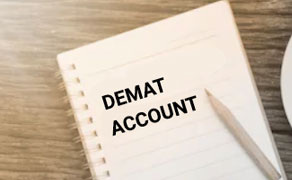How to Check Your Demat Account Balance
In today’s fast-paced world of stock trading, keeping track of your investments is crucial. A demat account (short for dematerialized account) allows you to hold shares and securities in an electronic format, making it easier to manage your investments. Knowing how to check your demat account balance is essential for staying updated on your portfolio’s performance and making informed trading decisions. Whether you’re a beginner or a seasoned investor, this guide will walk you through the simple steps to check demat account balance online or offline, ensuring you have full control over your stock trading account.

What is a Demat Account Balance?
Your demat account balance reflects the total value of the securities (such as stocks, mutual funds, bonds, or ETFs) held in your demat account at a given time. It’s a snapshot of your investments, which can fluctuate based on market prices. Regularly checking your demat account balance helps you monitor your portfolio, track gains or losses, and plan your next moves in the stock market.
Why Check Your Demat Account Balance?
Before diving into the steps, let’s understand why checking your demat account balance is important:
- Track Investments: Stay updated on the performance of your stock trading account.
- Financial Planning: Use the balance to align your investments with your financial goals.
- Market Awareness: Monitor how market changes affect your portfolio.
- Decision-Making: Make informed decisions about buying, selling, or holding securities.
Now, let’s explore the various methods to check demat account balance.
How to Check Demat Account Balance: Step-by-Step Methods
Method 1: Check Demat Account Balance Online via Broker’s Website or App
Most stockbrokers and depository participants (DPs) offer user-friendly platforms to check your demat account balance online. Here’s how to do it:
- Log in to Your Demat Account:
- Visit your broker’s official website or download their mobile app (e.g., Zerodha Kite, Upstox, or Groww).
- Enter your credentials (User ID, Password, and any two-factor authentication, like an OTP or PIN) to complete the demat account login.
- Navigate to the Dashboard:
- Once logged in, go to the dashboard or portfolio section of the platform. This section typically displays your demat account balance and holdings.
- View Your Holdings:
- Look for tabs like “Portfolio,” “Holdings,” or “Demat Balance.” These sections list your securities, their quantities, and their current market value, giving you a clear view of your demat balance online.
- Check Summary:
- The platform will display the total value of your holdings, which is your demat account balance. Some platforms also show additional details like unrealized gains/losses and available cash for trading.
Pro Tip: Ensure your device is secure and avoid using public Wi-Fi for demat account login to protect your sensitive financial information.
Method 2: Check Demat Account Balance via Depository Websites (NSDL/CDSL)
In India, demat accounts are managed by two depositories: NSDL (National Securities Depository Limited) and CDSL (Central Depository Services Limited). You can check your demat account balance directly through their platforms.
- Access NSDL or CDSL Website:
- For NSDL, visit the “IDeAS” (Investor Data Enquiry and Access System) portal.
- For CDSL, use the “EASI” (Electronic Access to Securities Information) or “EASIEST” facility.
- Log In:
- Use your Depository Participant (DP) ID and Client ID for demat account login. You may need to register for these services if you haven’t already.
- View Your Demat Balance:
- Once logged in, you’ll see a detailed breakdown of your holdings, including the number of shares, their current market value, and your overall demat account balance.
Note: You’ll need your DP’s credentials or registration details to access these services. Contact your broker if you’re unsure about your login details.
Method 3: Check Demat Account Balance via Email or SMS
Many brokers offer demat balance online updates through email or SMS:
- Email: Request a statement from your broker, which will include your demat account balance and a detailed list of holdings.
- SMS: Some brokers send periodic SMS updates with your portfolio value. You can also request an instant balance update by sending a specific code to your broker’s registered number.
Method 4: Contact Your Broker
If you prefer offline methods or face issues with online access:
- Call your broker’s customer care and provide your demat account details to get your balance.
- Visit your broker’s branch office for an in-person update on your stock trading account.
Method 5: Consolidated Account Statement (CAS)
A Consolidated Account Statement (CAS) provides a comprehensive view of all your demat accounts linked to your PAN:
- Access CAS: Log in to the NSDL or CDSL website and download your CAS.
- Check Holdings: The CAS lists all your securities across multiple demat accounts, showing your total demat account balance.
Tips for Managing Your Demat Account Balance
- Regular Monitoring: Check your demat account balance at least weekly to stay informed about market movements.
- Secure Login: Use strong passwords and enable two-factor authentication for your demat account login.
- Track Charges: Be aware of depository participant fees or transaction charges that may affect your stock trading account.
- Stay Updated: Follow market news to understand fluctuations in your demat balance online.
Common Issues When Checking Demat Account Balance
- Login Issues: Ensure you’re using the correct User ID and Password. Reset your password if needed.
- Platform Downtime: If the broker’s website or app is down, try alternative methods like NSDL/CDSL portals or customer care.
- Discrepancies: If your demat account balance seems incorrect, verify recent transactions or contact your broker for clarification.
Conclusion
Checking your demat account balance is a straightforward process, whether you use your broker’s app, depository websites, or offline methods. By regularly monitoring your stock trading account, you can stay on top of your investments and make informed financial decisions. Whether you’re checking your demat balance online through a demat account login or requesting a statement, these steps ensure you have quick access to your portfolio’s status.